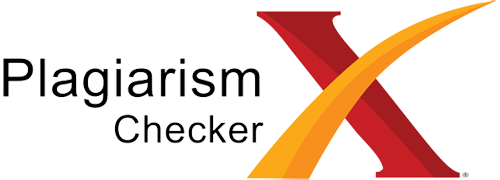Pengaruh Penerapan Model Direct Instruction Terhadap Persepsi Dan Hasil Belajar Psikomotor Siswa Dalam Pembelajaran IPA Fisika Di Kelas VIII SMPN 18 Pekanbaru
Abstract
This study aims to determine the effect of the implementation of Direct Instruction model of perception and psychomotor learning outcomes in science learning physics class VIII student at SMP 18 Pekanbaru in the academic year 2011/2012 semester on the subject matter of light reflection. The research was conducted by the research design Postest-Only Control Design. The population in this study were all students in grade school N 18 Pekanbaru VIII and VIIIA-class research samples and VIIIG. The research instrument used was the study and data collection instrument. Data collection techniques are tests of psychomotor learning outcomes and the provision of a questionnaire administered after the learning process is completed. Data were analyzed through descriptive and inferential analysis. From the results of descriptive analysis of data obtained by the average absorption of psychomotor skills of physics students in science class and the class of experiments is very good control and effectiveness in the category of very effective learning.Exhaustiveness experimental class learning objectives stated otherwise completed while control classes are not complete. Of inferential analysis is performed based on hypothesis testing of learning outcomes of students psychomotor obtained tcount = 9.293 and = 1.688 TTable. In order to obtain student perceptions questionnaire t count = 6.055 and = 1.667 TTable. Psychomotor learning outcomes and student perceptions based on inferential test above the 95% confidence level.
Downloads
References
[2] Arikunto,Suharsimi. Prosedur Penelitian Suatu Pendekatan Praktek. Jakarta: PT Rineka Cipta. 1996.
[3] Depdiknas. Kurikulum dan Hasil Belajar. Jakarta: Pusat Kurikulum Balitbang.2004.
[4] Depdiknas. Sekolah Menengah Pertama Standar Kompetensi dan Kompetensi Dasar Mata PelajaranIPA. Jakarta: Depdiknas. 2006.
[5] Dimyati dan Mudjiono. Belajar dan pembelajaran. Jakarta: Rineka Cipta. 2006
[6] Kotler, Philip. Marketing Manajemen: Analysis, Planning, implementation, and Control.9thEdition. NewJersey : PrenticeHallInternational,Int,. 2000.
[7] Kuswanto, dkk., Sains. Jakarta: Depdiknas. 2004
[8] Misrarita. Hasil Belajar Keterampilan Kognitif Melalui Model Pembelajaran Langsung pada Siswa SDN 021Teluk Kuantan.Pekanbaru: (Tidak Diterbitkan). 2008
[9] Nur. Model Pengajaran Langsung. Surabaya: Pusat Sains dan Penelitian Sekolah. 2007.
[10] Rusdi, Andi. Uji Normalitas Data dan Varians. Pare-pare: Universitas Muhammadiyah Pare-pare. 2009.
[11] Slameto. Belajar dan Faktor-Faktor Yang Mempengaruhinya Jakarta: Rineka Cipta. 2003.
[12] Sudjana, N. Penelitian dan Penilaian Pendidikan. Bandung: Sinar Baru Algesindo. 2007.
[13] Sudjana, N. Penilain hasil Proses Belajar Mengajar. Sinar Baru Algesindo. Bandung. 2004.
[14] Sugiyono. Metodologi Penelitian Pendidikan. Bandung: Alfabeta. 2010.
[15] Yamin,Martinis. Strategi Pembelajaran Berbasis Kompetensi, Jakarta: Gaung Persada Press. 2010.
[16] Zulhelmi. Penilaian Hasil Belajar Mata Pelajaran Fisika. Pekanbaru: Universitas Riau. 2007.
[17] Zulkarnaini. Jurnal Pembelajaran Siswa Berbasis Observasi Gejala Fisis pada Siswa Sekolah Lanjutan. Banda aceh: Jurnal Pendididikan. 2007.
 Abstract views: 212 ,
Abstract views: 212 ,  PDF downloads: 215
PDF downloads: 215









